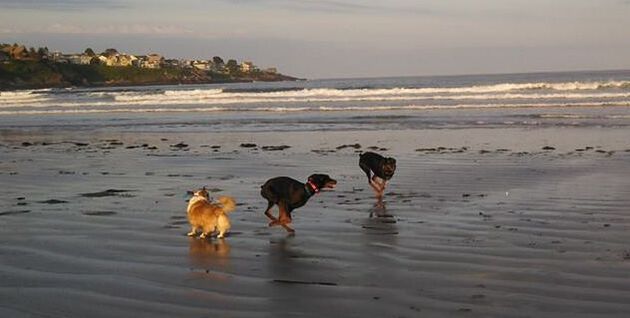- A simple walk down the road
- The ability to relax when certain noises can be heard
- The ability to travel with their humans
- Car rides, bus rides, and so on
- The ability to play
- Enjoying nature adventures
If your dog will not take food or play even in a quiet non distracting area:
- Calming and chill exercises, which work over the long term and are very valuable and important
- Start training with something like molding to start teaching the position (and get a dog used to handling)
- Identify any, even out of the box, things that your dog finds motivating (outside, boxes, sniffing, being groomed, massages, and so on)
- Find environments that you can set up for your dog to be comfortable in at first
- Patience, remember your dog is having very real fear feelings. Even if you think your dog should not be afraid, the important thing is that your dog is afraid. A lack of patience will not change that.
- Do not put your dog in situations they don't need to be in that they can not handle. You will work with your dog to get them less afraid gradually.
- If you find them curious about something they previously feared (and it is safe and appropriate), encourage that exploration.
- For noise or action phobia or reactivity, you can find just about anything on a Youtube video for training your dog around. For noise phobias, you can start on the very lowest of volumes while you do a relaxation exercise, training, or even a distracting play session.
- Places for downtime that they can feel safe and relaxed (Crate, favorite bed, favorite room, favorite piece of furniture). It should be a place that if they are done engaging, they can just relax. Dogs need their sleep and down time just like we do.
If your dog will take food or play with a toy (you would start this in a quiet non distracting place away from triggers):
- Trick training with food as a reward
- Playing chase with food reward
- Play training with toy, which can be tricky. It is best to find a trainer to show you how to do this successfully with your dog. However, one of tricky parts is that your dog might not be able to start play with the trainer around. This can go wrong with a toy, if your dog is very driven and reactive. The wrong environment for this can make it worse. It is better to start something like this with food, as that has a more relaxing affect.
- Obstacle course and agility (or even just introducing new and unusual surfaces. You don't need a full agility set up to do this.
- Nose and scent work
- Tracking
- Jogging with me on a transitional leash if we are in public. A transitional leash is an great behavioral tool (and a lessor training tool) that helps your dog learn to trust your lead with less effort and training knowledge needed from the owner.
- We have been training for a long time, so we will do obedience commands or trick positions with music, toys, or just alone. We can do these on equipment or off all equipment (assuming the environment is right). BTW, Shana is very familiar with my play list and this music makes her feel more comfortable and calms her down.
- Once a day, we have a calming behavioral exercise of some sort. Sit on The Dog, Behavioral Down, or Long Place are our frequent go to exercises for this.
- When a strange dog is over for long term training, we often do at a distance commands and tricks while I am behind the gate in the other room with food rewards. I do this to decrease her discomfort and fear of our new visitor.
In summary, there are just too many pieces to this puzzle to be thorough in an article or even a book! The main point is, that you can make a difference and big improvement in your dog's life. It is 99% probable that you are able to make that improvement. However, you may not cure ALL of the dog's fears and phobias. Also there is no timeline (like 5 days, 5 months, 10 minutes per day) for behavioral real change, as each dog is an individual with many moving parts that are controlling the fear issue (genetics, temperament, breed generalities, past treatment, neglect, past trauma and so on). Working on this with your dog as soon as possible, is the only way to start improving your dog's life for your dog.
If you select the "behavior" category to the right, other articles in the category of behavior will come up. Here is the link that can get you there and also bring up future behavioral articles. www.mainedogtrainer.com/blog/category/behavior.
I work with a lot of fearful dogs and their owners, who also can be fearful about the situation. I plan on continuing this series each week with a couple more articles about topics that are important to fear in dogs.

 RSS Feed
RSS Feed